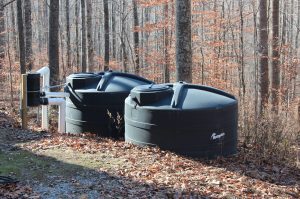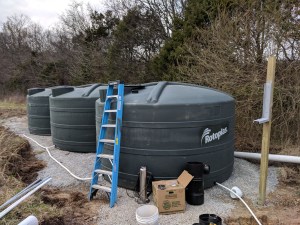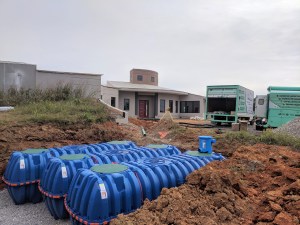3 Types of Residential Rainwater Harvesting Systems for Whole-House Use

Let’s Dive In
If you are interested in rainwater harvesting as an alternate water source to fully supply your home with water, a major starting point is your house itself.
This article lays out the three most prominent rainwater harvesting system types and how they accommodate home layouts.
Residential Rainwater Harvesting for Whole House Use
Rainwater harvesting is a viable and legitimate option for whole-house water supply. Read that sentence again. This is numerous times over true when the other option is drilling a well or getting piped installed from the city to supply your home.
But even if that is not the case, rainwater harvesting can still be an attractive option for those who have immediate access to municipal water – We’ve experienced this first-hand.
Okay, now that this is established, if you are interested in rainwater harvesting, here are the three most prominent system types for residential use.
The primary difference of each of these system types is storage type and placement.
Type 1. Above Ground Storage with Downhill Placement
If you have land that is downhill from your home, this system type is an option that may work for you.
It requires the least amount of “disturbance”, since there is no excavation needed for placing the storage underground, and the downspouts do not need to be modified other than the very bottom connection.
Gravity flow downhill is an easy option for those who have land with slope.


Type 2. Above Ground Storage with Wet Conveyance
This is the solution for keeping above ground storage even on flat land.
The downspouts are replaced, up to the required height, with water-tight conveyance that can be painted or covered to keep in line with the exterior design. This allows for the water to fill up in the conveyance until it reaches the necessary height to flow into the rainwater storage.
This can seem sketchy at first blush, but in reality, can be an economic solution for homes with a flat landscape.


Type 3. Below Ground Storage
This is a very common system type for new construction.
The storage is placed underground, causing minimal disturbance to landscape design and usable space.


What System Type Works Best for Your Home?
The biggest question you’ll need to answer is if you want above or below ground storage. It is the determining factor in the equation.
The filtration, system process, and controls will be very similar across the board. It all comes down to storage.
Ready to Take Control of Your Water Supply?
Don’t wait for water shortages or unreliable sources to disrupt your life. With our Rainwater Harvesting systems, you can enjoy a sustainable, reliable, and completely self-sufficient water solution tailored to your home’s needs.

